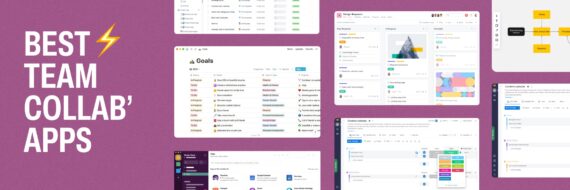Like it or not, most of us are online customers now. So it’s more important than ever for businesses to deliver a stellar digital customer experience (CX). But what exactly does that mean?
One key issue is how your customers perceive their interaction with your business. Every single message, link click, phone call and other connection counts. Digital customer experience isn’t just about customer service; it’s everything.
In this guide, we’ll look at why it’s crucial to think about digital customer experience management, and how to deliver a great one.
Why Digital CX is Important
It’s easy to think that having multiple places where customers can connect with you means you’re delivering an excellent online customer experience. But that’s not enough.
Customers don’t care if you claim you have omni-channel or multi-channel capabilities. They only care that they can connect with you, the way they want to connect with you, and when they want to connect with you.
In fact, research from Lumoa shows that most companies fail to deliver the digital customer experience their customers expect. A study by Bain & Company found that while 80% of businesses believe they provide a good experience, only 8% of customers actually believe they receive it.

That’s a pretty shocking statistic, and it’s important for you to buck that trend. Here’s why. A great customer experience keeps customers coming back. Repeat customers are golden, as it’s easier to get new business from past customers than brand new ones. Get digital CX right, and it’s a ticket to continued business success.
There’s another reason, too: customers talk, via personal recommendations and online reviews and ratings. Potential new customers check these out before they buy. Depending on what they find, you can either win new business, or lose it. So it’s essential to avoid the issues that drive people away.
🎬 Learn what Slickplan can do!
We filmed a short video to show you exactly how to use Slickplan
Digital Customer Experience Frustrations
Hotjar identifies several common digital customer experience frustrations. If you’ve ever experienced any of these you know how annoying they can be.
Most people hate to wait, and online customers are no exception. A full 20% of them list long wait times as a major turnoff. When they’re waiting, they get upset and frustrated, and they’ll likely go elsewhere. Website errors and slow delivery also result in cart abandonment.
It’s also annoying when employees don’t understand what customers are looking for. If you’ve ever tried to get a service provider to acknowledge your issue rather than walking you through the same tired script, you’ll understand this frustration. If employees focus on what they think customers need, rather than what they actually need, those customers may walk away to avoid further frustration.
Unanswered questions don’t help, either. There’s no point in being on multiple channels if your customers can’t get a straight answer. In a recent personal interaction with a social media company, I discovered that despite technically offering support on two social media sites and email, only one of those channels – email – resulted in a response, and it wasn’t that quick. That stopped me from being able to accomplish a key task at the right time.
Most marketers love automation as a timesaver, but too much automation is a turnoff for customers. It can make customers think you don’t care, and that creates a terrible perception and experience. Jeff Toister, author of The Service Culture Handbook, says:
One of the biggest myths is that a completely digital experience can replace people. Companies are racing to leverage self-service technology, such as websites, apps, and bots in an effort to reduce costs.
Surprisingly, this technology has not significantly reduced live contacts. What’s happening instead is customers tend to use technology for simpler tasks and look to a human for more complicated issues. Customers get frustrated if they can’t easily access the help they need, which can cause businesses to quickly lose customers.
Customer-focused companies are creating a great digital customer experience while also providing easy access to expert live help when they need it.
If you’ve ever lived in a small town, then your local shopkeeper probably knew what you were looking for the minute you walked through the door. People still want that kind of personalized and relevant service online. But not all companies do personalization well, resulting in customer interactions that feel anonymous and uncaring – another CX no-no.
Key Features of a Great Digital Customer Experience
So, how do you actually deliver great digital customer experience that makes your customers want to keep coming back? One of the biggest issues you need to solve is how to create seamless interactions, no matter where your customers connect with you.
Recent Google research shows that most customers use a couple of touchpoints (phone, computer, in-store visit) on their way to making a purchase. They don’t want to start from scratch at every new touchpoint. Customers expect you to know who they are so they can pick up exactly where they left off. It’s a key reason why your UX design strategy has to cater for multiple devices.
Another aspect of this is consistency. On Amazon, desktop, mobile web and mobile app interfaces are getting more similar, so customers have the same experience each time. Add a product to the cart on your phone, and it’s there when you login in your browser, and you can pick up where you left off on any device or interface.

Accessibility also helps create a great online customer experience. Customers must be able to reach you in multiple ways, and the ways that work best for them. If you’re available on live chat, email, social media or by phone when they have a query, and you resolve it quickly – timeliness is also important – then they’re more likely to complete the desired action.
Finally, you’ve got to personalize so your customers feel seen and understood. Everyone wants the kind of experience you get on OTT streaming platforms like Netflix or Spotify, where after a while, the apps seem to read your mind and recommend exactly what you need. That’s why personalization is about more than using customers’ names. Great customer experience keeps track of interactions on different devices, on social media, and by email to get a complete view of the customer and tailor the experience accordingly.

8 Ways to Deliver a Great Digital Customer Experience
Now that you know customers’ major annoyances, and some of the key underlying aspects of good digital CX, how do you ensure that’s what you deliver? Here are eight ways to do that.
1. Start With a Vision
For Jeff Toister, the first step for businesses wanting to create a great digital customer experience is a shared vision.
Start by creating an overarching customer experience vision. This is a shared definition of an outstanding experience that gets everyone on the same page. The vision should reach beyond the digital experience to encompass all facets of customer experience, including customer service, so you can take an integrated approach. The goal is to use the vision to provide a consistent experience across all platforms and channels.
2. Know Your Customers
Customer experience futurist, Blake Morgan, says the starting point is knowing your customers.
Know your customers! A digital customer experience can’t be created blindly; it must be based on understanding your customers’ preferences, pain points and concerns. There is so much data available to companies today, and the best experiences come from using that data to gain a deep understanding of your customers.
Put yourself in their shoes and walk through the entire customer journey. Use data to track how they’ve interacted with the brand in the past and what they could be looking for in the future. There are so many options when it comes to creating a digital customer experience—data helps brands focus on the right approach. What seems like the best digital experience on paper can be completely ineffective if it doesn’t match with what customers actually want.
Jeanne Bliss, of Customer Bliss, agrees:
Build a map defining both your customers’ goals and their emotions as they work to accomplish their goals through your company. Then unite all of the operations to deliver. Not just digital. Not just AI. Not just mobile.
3. Optimize SEO and Website Navigation
Landing on your site isn’t where digital customer experience starts. It begins when potential customers search for information about an issue they face. If your products and services meet their needs, you need to let them know.
To achieve this, plan your content so that it attracts the right peopl, and use search engine optimization to make your content findable. Back that up with website navigation that helps customers get the information they need.

This isn’t just cosmetic; when customers follow a link from a search results page expecting certain information, that’s what you have to deliver. Otherwise, it could work against you and make your content less visible.
4. Look after UX
User experience is a core component of customer experience. It’s about making sure your website works for your customers so they can find what they need or learn what they need to know.
To make this happen, you need to understand and diagram UX flow on your website. When you know the paths your customers take on your website or mobile app, you can ensure they have a smooth interaction wherever they are.
5. Create Consistent Messaging
As we’ve seen, wherever customers interact with you, they expect consistent messaging. As Kapost points out, being consistent helps both you AND the customer. For one thing, if your marketing, sales, and customer service teams are on the same page, there’s no confusion about how to interact with customers. And for customers, it makes for that seamless experience you’re aiming for.
Customers don’t want just a digital experience – they want a one-company experience. Without including “glue” in your strategy to unite the facets of your organization to enable customers to achieve their goals…you may be fixing one thing and breaking another
6. Talk to Your Customers

If you want to know what your customers want, just ask them. When you know, it’s easier to make their digital customer experience great. You can do this with:
- Pop-up single question surveys on your website
- One-question or short surveys in your email marketing
- A social media poll or question thread
- An in-depth customer survey
This is a great way to get input on new products and services, and to ensure you are giving customers the online experience they actually want.
7. Be Available Where Your Customers Are
Not sure where to connect with your customers? Pay attention to the data. See whether they are reaching out on social media, via customer service, email or phone, then you’ll know which are the key channels to use. It helps to manage expectations, too. Let customers know when you’ll be available on each platform, so they don’t get upset if they can’t reach you immediately.
8. Be Responsive
Finally, avoid giving your customers the frustration of asking a question and having it go into limbo. Respond to their queries and meet their needs as quickly as you possibly can to keep them happy. The more responsive you are, the more likely they are to give a positive rating to the digital customer experience.
Think visually. Improve UX with Slickplan
Build intuitive user flows, stronger customer journeys and improve information architecture.
3 Companies Who Get Digital CX Right
Let’s look at a few positive online customer experiences you can learn from.
First, a personal experience. Recently I contacted HostAwesome about swapping out a website in my hosting plan. I got a response to my support ticket within minutes, and in less than 30 minutes they’d figured out what I wanted to do, and had done it for me, which was way more than I expected. It was hassle-free and excellent, and because of that I gave them public thank-yous on LinkedIn and Twitter.
Another excellent customer experience many can relate to is interacting with an Apple Genius. These are people trained to help solve your problem, whether in-store or online. They work from the same customer service manual, so you have a consistent experience wherever you interact with them.
And who doesn’t love Amazon’s no-hassle 30-day returns policy? The UX here has definitely improved. Where it once used to take you awhile to find the returns section, you can now access the option via the orders menu, which really makes sense. And the ability to return items for free within the US means there’s less of a barrier to buying them in the first place.

Finally, the most important thing to know about creating a stellar digital customer experience is that it has to be flexible. As Blake Morgan points out, it’s a myth that there’s only one way to do it.
The beauty of digital is that it allows customers to connect with brands on their own terms in a way that works for them. Brands with the best digital customer experiences allow for personalized interactions and create a variety of ways for customers to get the assistance they need. It’s not a one-size-fits-all approach, but a customizable experience that gives power to the customer. Digital customer experience is based on relationships and convenience, and it takes both aspects to create engaged, loyal customers.
Learn more about using UX planning to deliver better customer service.













 X
X

